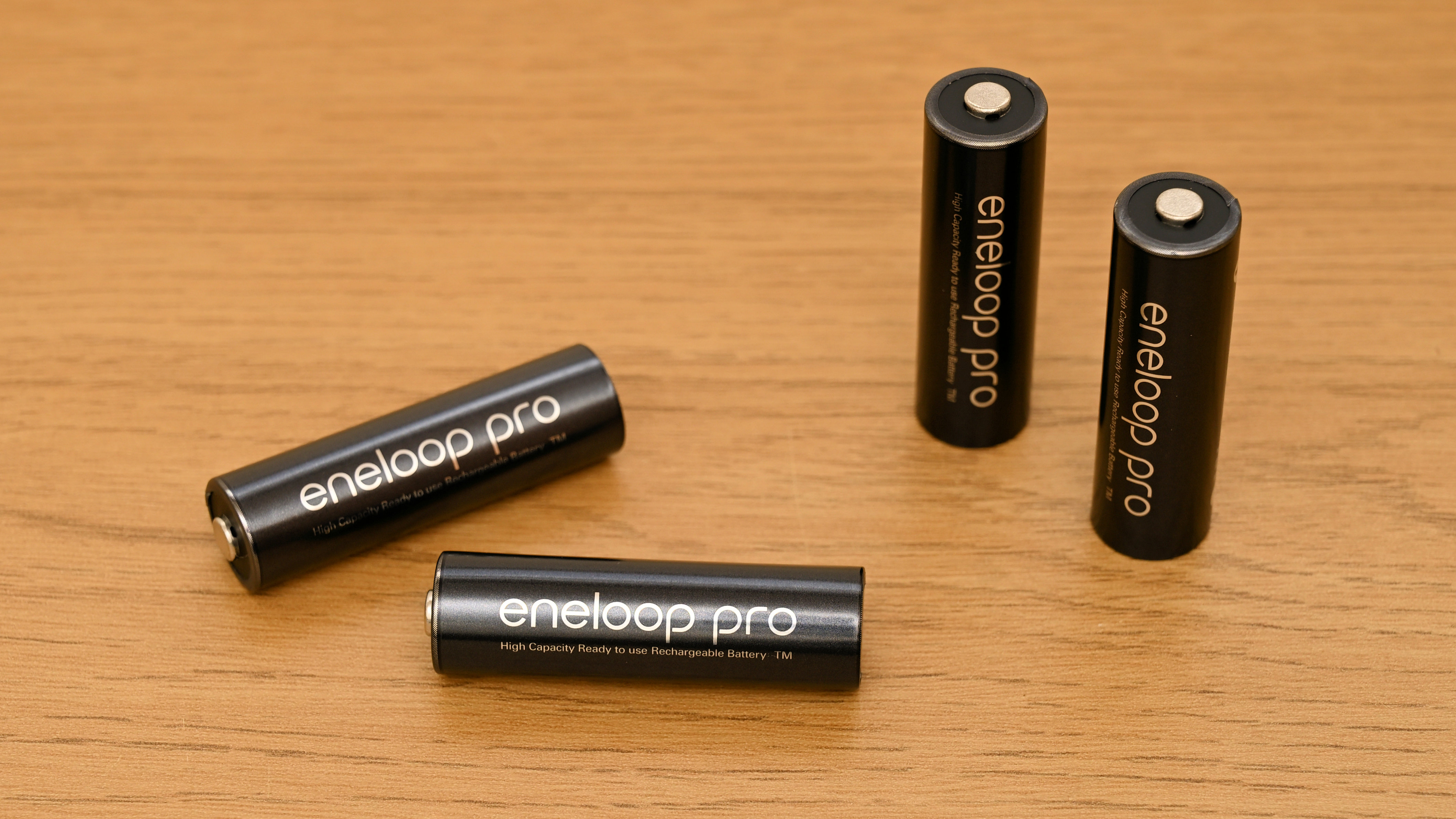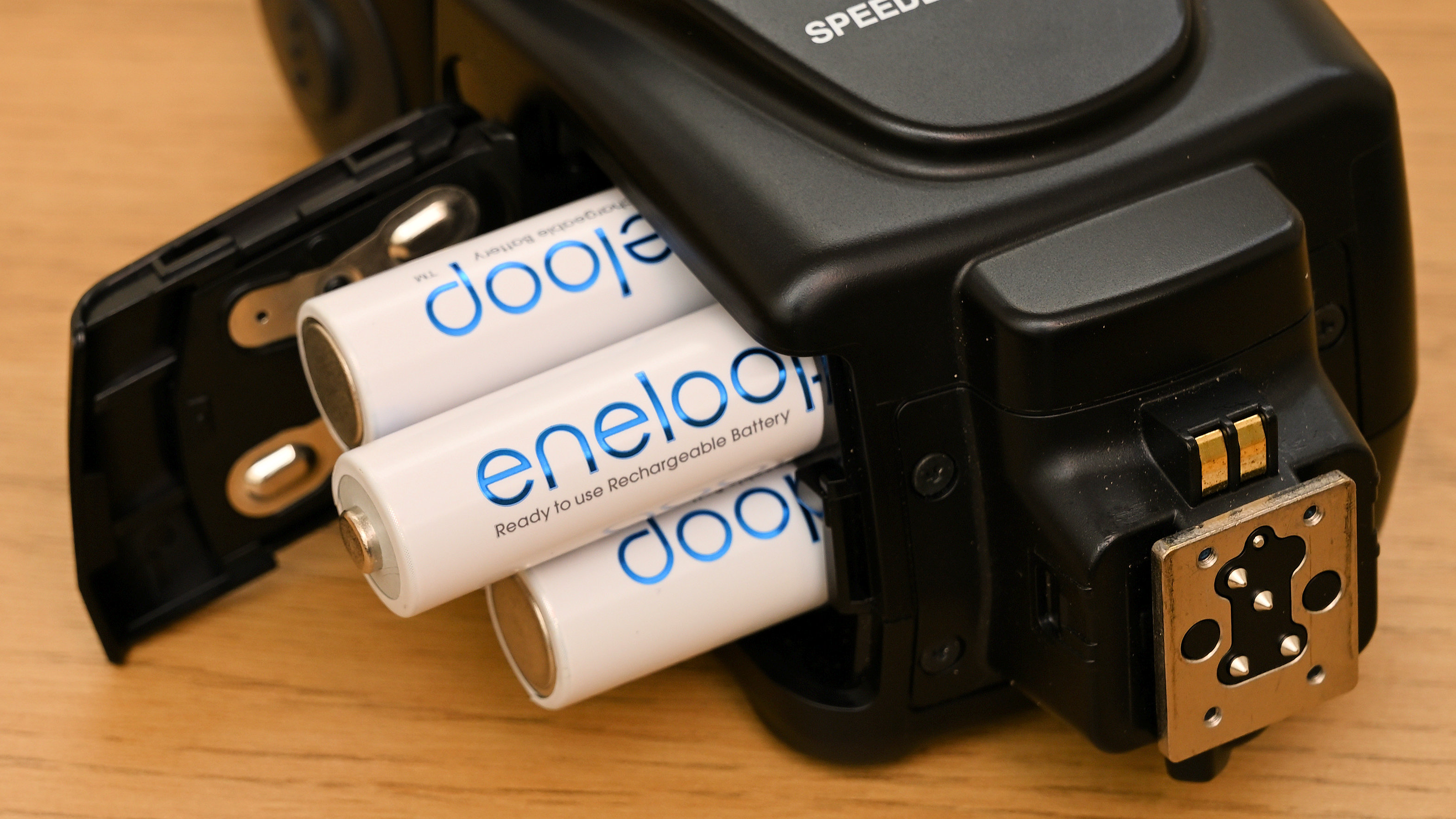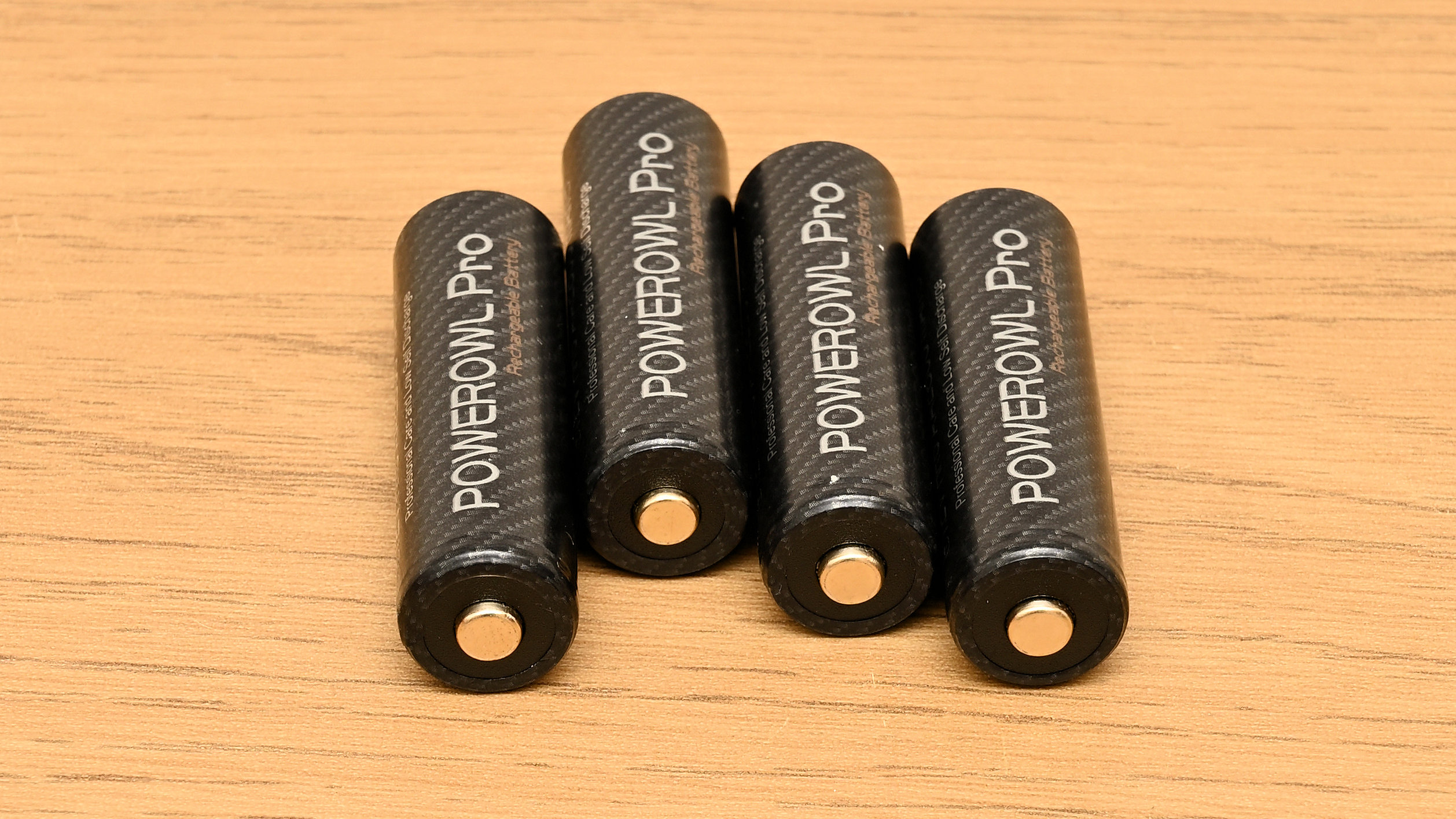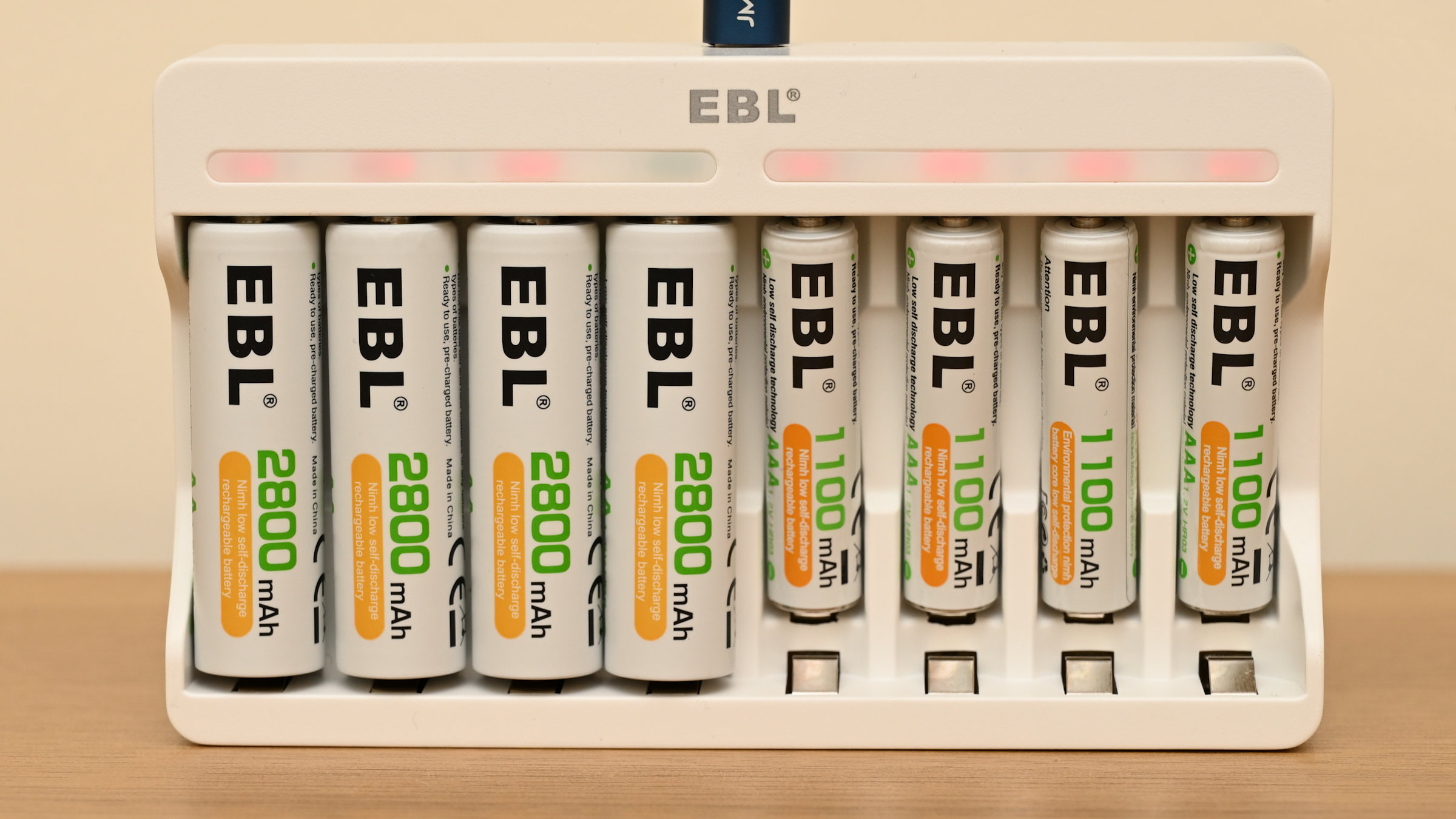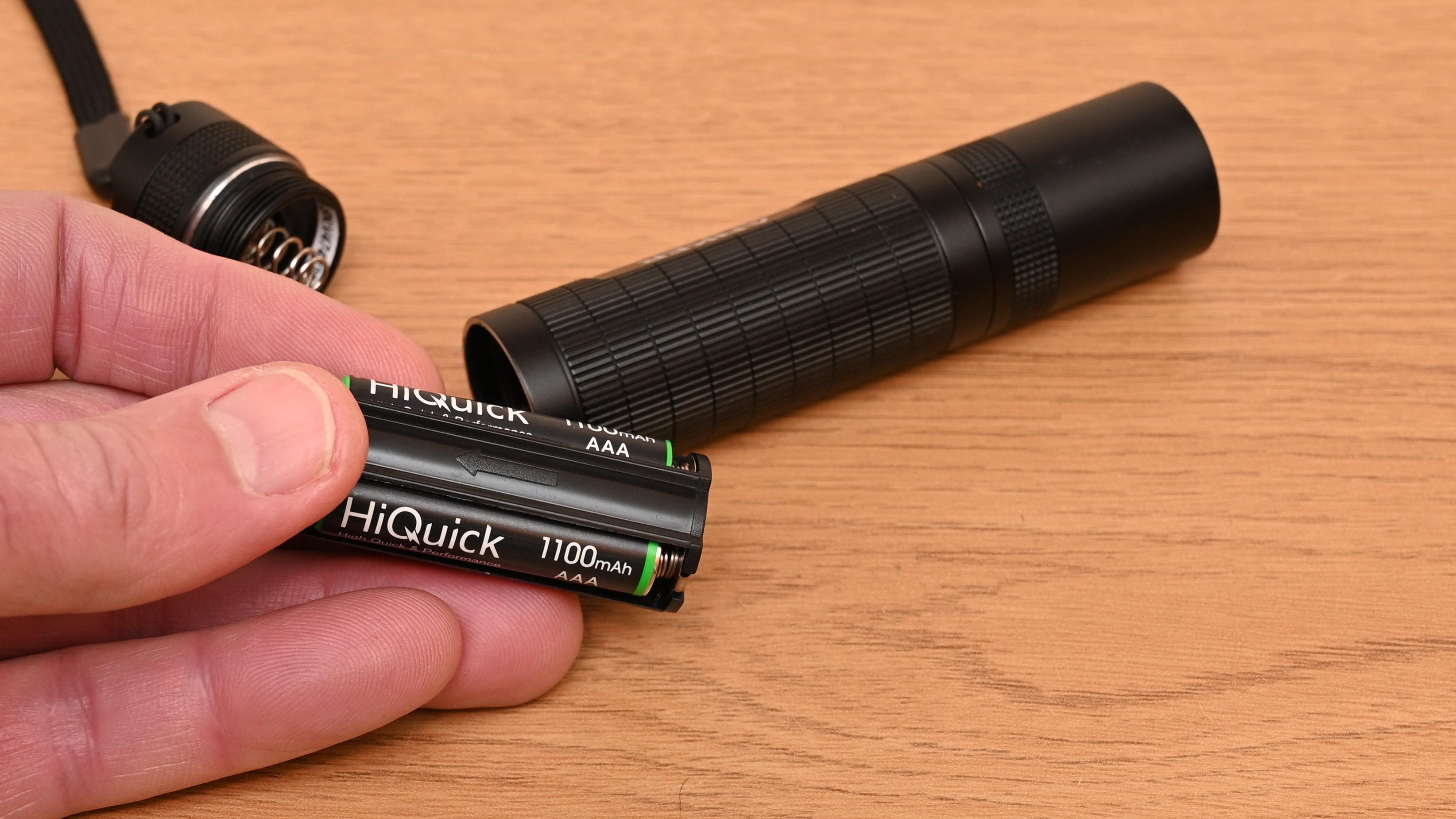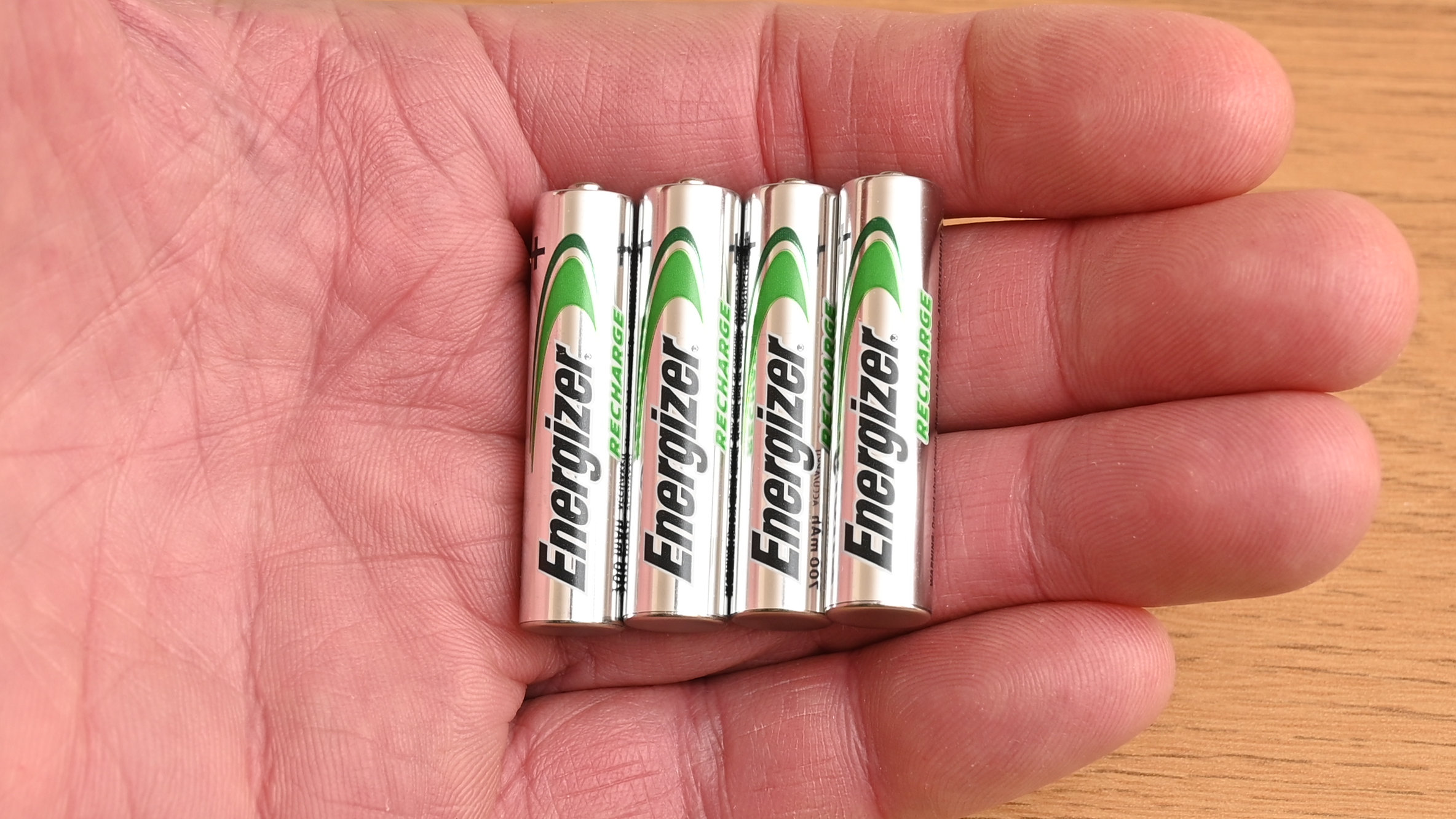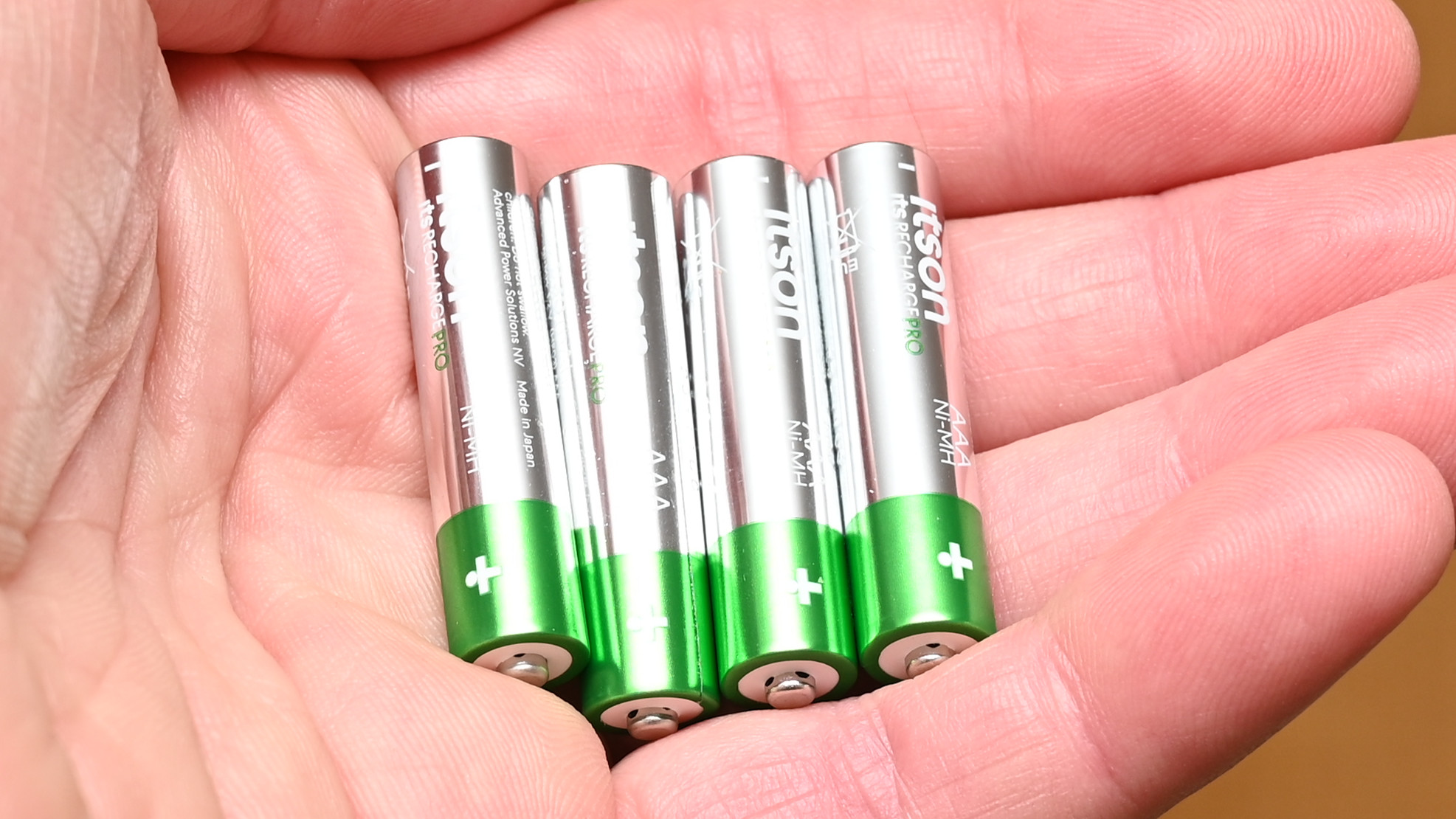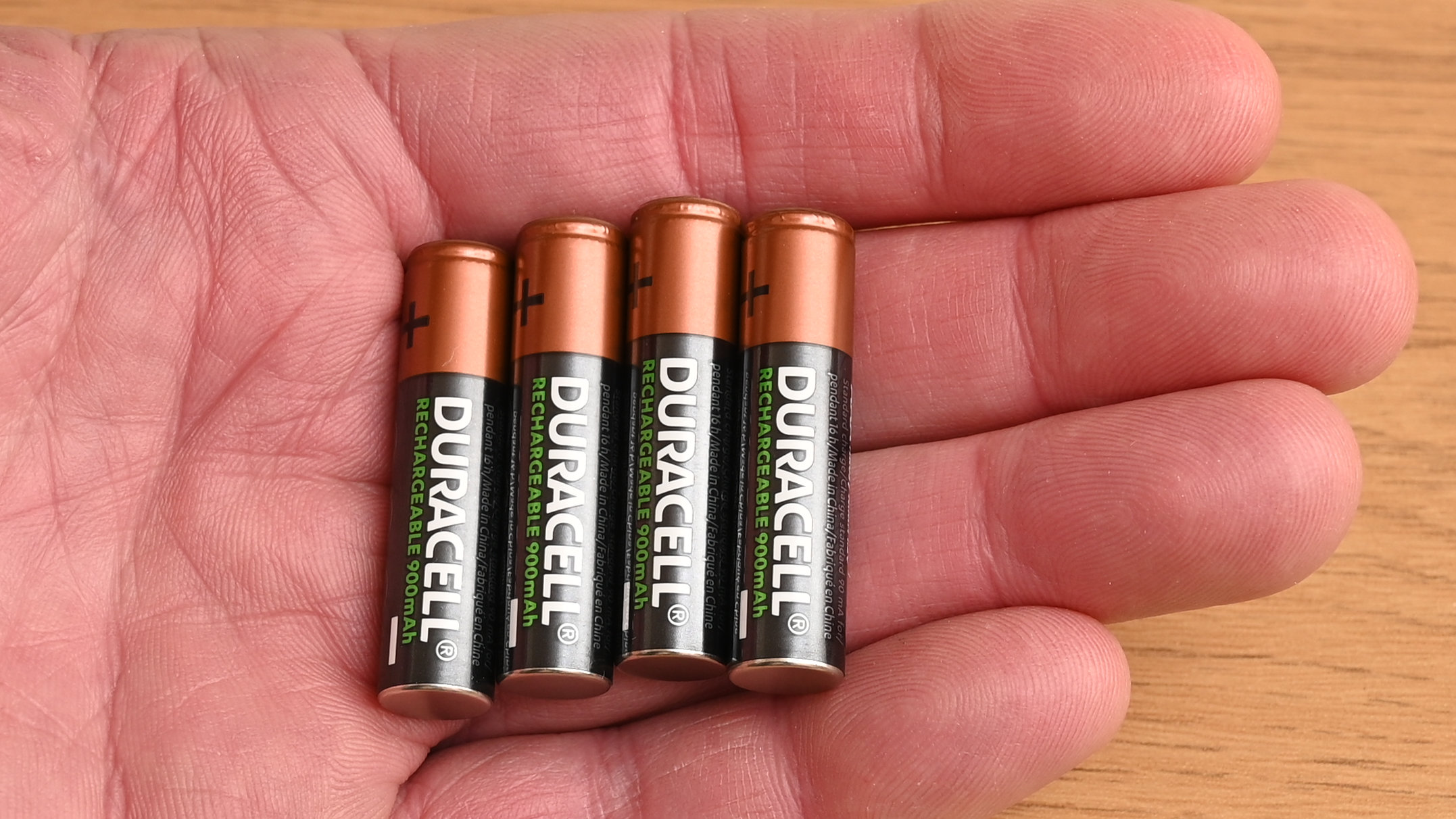The best AAA rechargeable batteries
Keep your devices running longer, with the best AAA rechargeable batteries available today
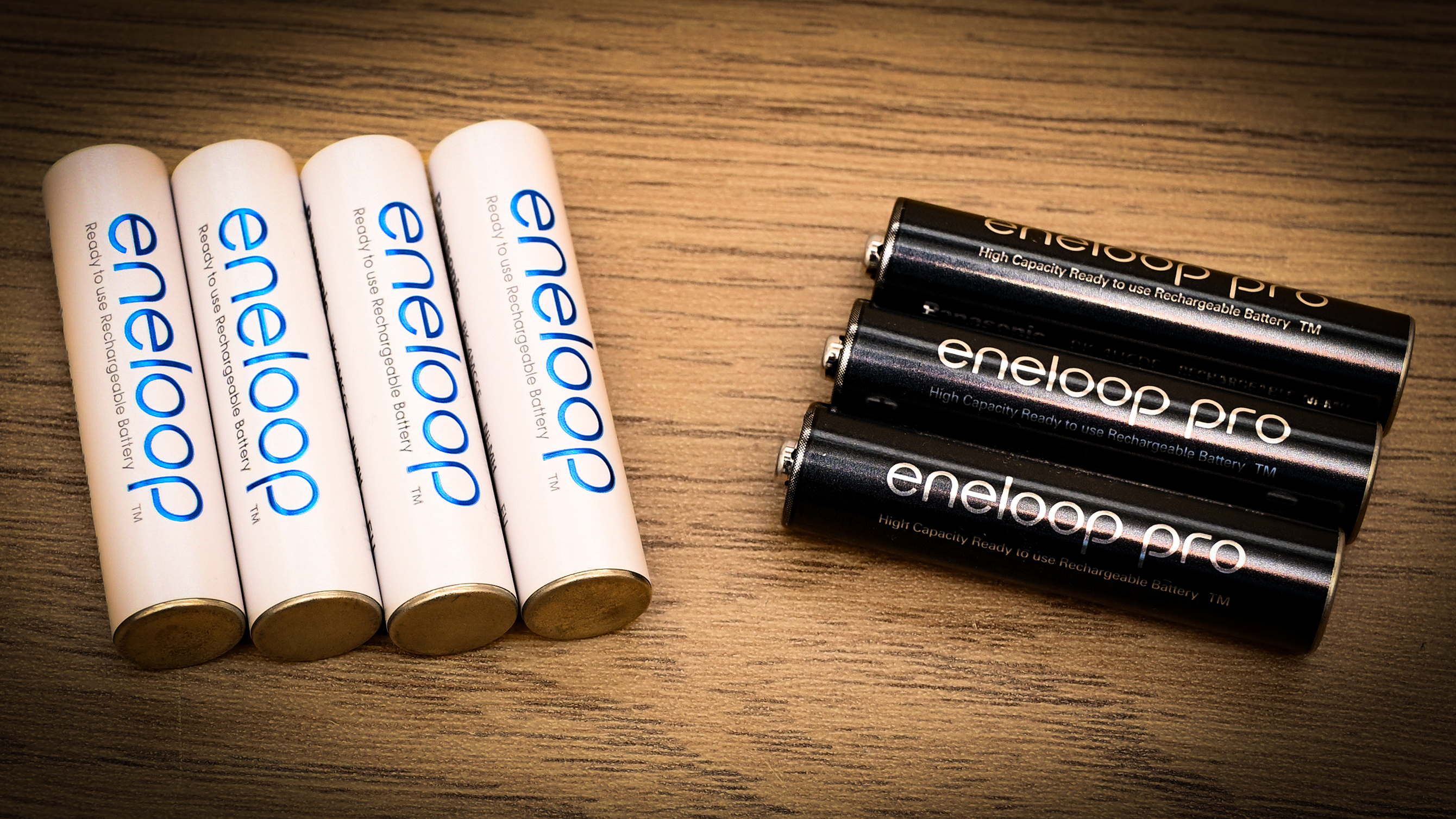
The best rechargeable batteries are much better at holding their charge than they ever used to be. Recent generations of triple-A NiMH batteries are built to hold most of their charge for many months or even years, making them useful for all sorts of gadgets from remote controllers, to flashlights and pretty much anything that runs on portable power. Furthermore, they are usually sold precharged, so are good to go straight out of the pack.
In photographic circles, there’s a variety of gadgets that take AAA batteries, from camera remote controllers to flash triggers and even a few compact flashguns. For the last of these, an additional bonus is that flashguns tend to recycle much faster running on rechargeable NiMH batteries compared with disposable alkaline cells – typically in less than half the time. Note that more devices use the larger-diameter AA cells, for which we have a separate best AA rechargeable battery guide.
Otherwise, let's take a look at some of the best rechargeable AAA batteries on the market right now and see how they compare.

Matthew Richards is a photographer and journalist who has spent years using and reviewing all manner of photo gear. He is always uses rechargeable batteries in his flashguns – and has tested all of the different options in this guide.
Our top picks
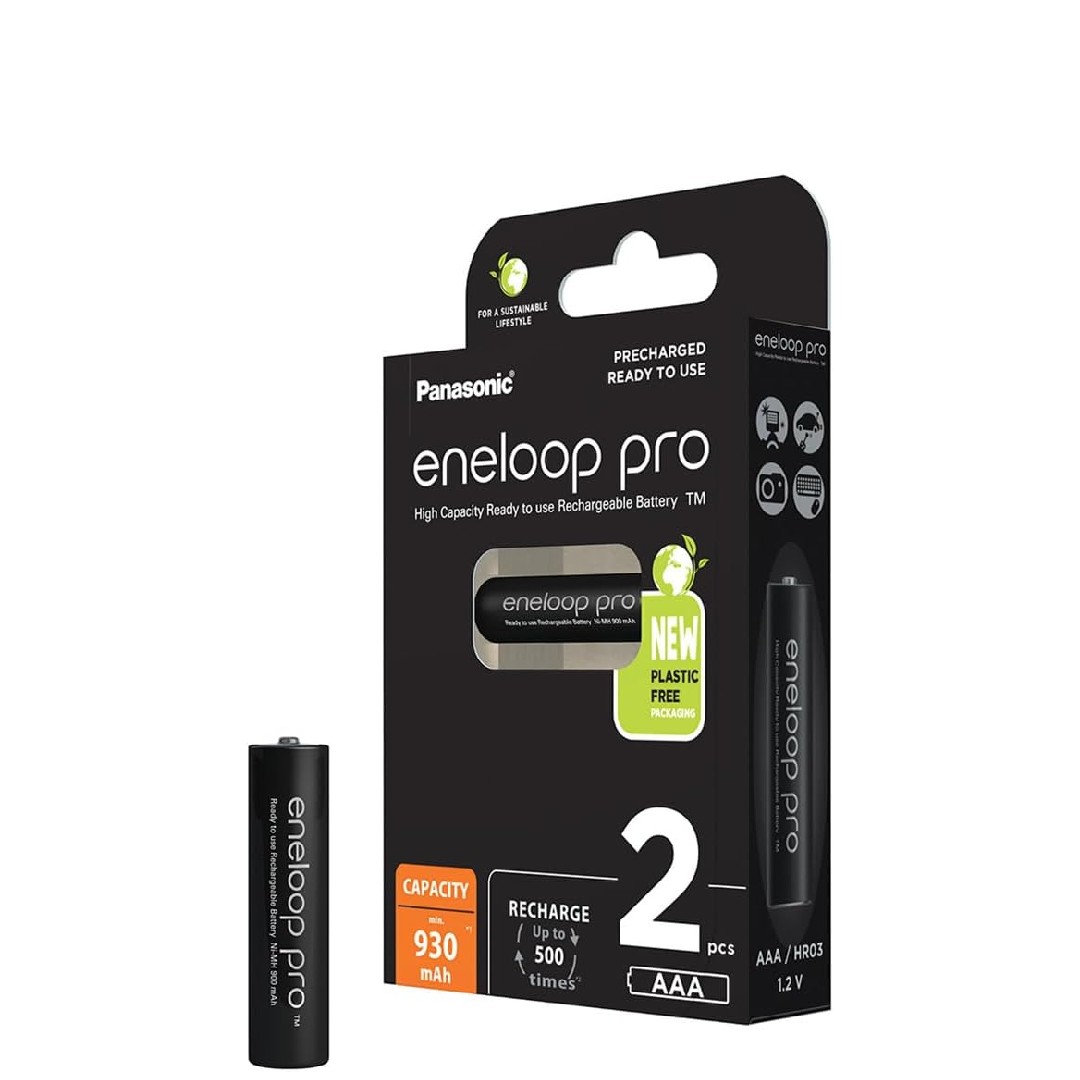
Best overall
At Digital Camera World, we’ve been using Eneloop Pro batteries for years and have enjoyed absolute reliability, all of the time, even in the harshest conditions. These batteries are rated to work in temperatures from -20 to +50 degrees Celsius.
Read more below
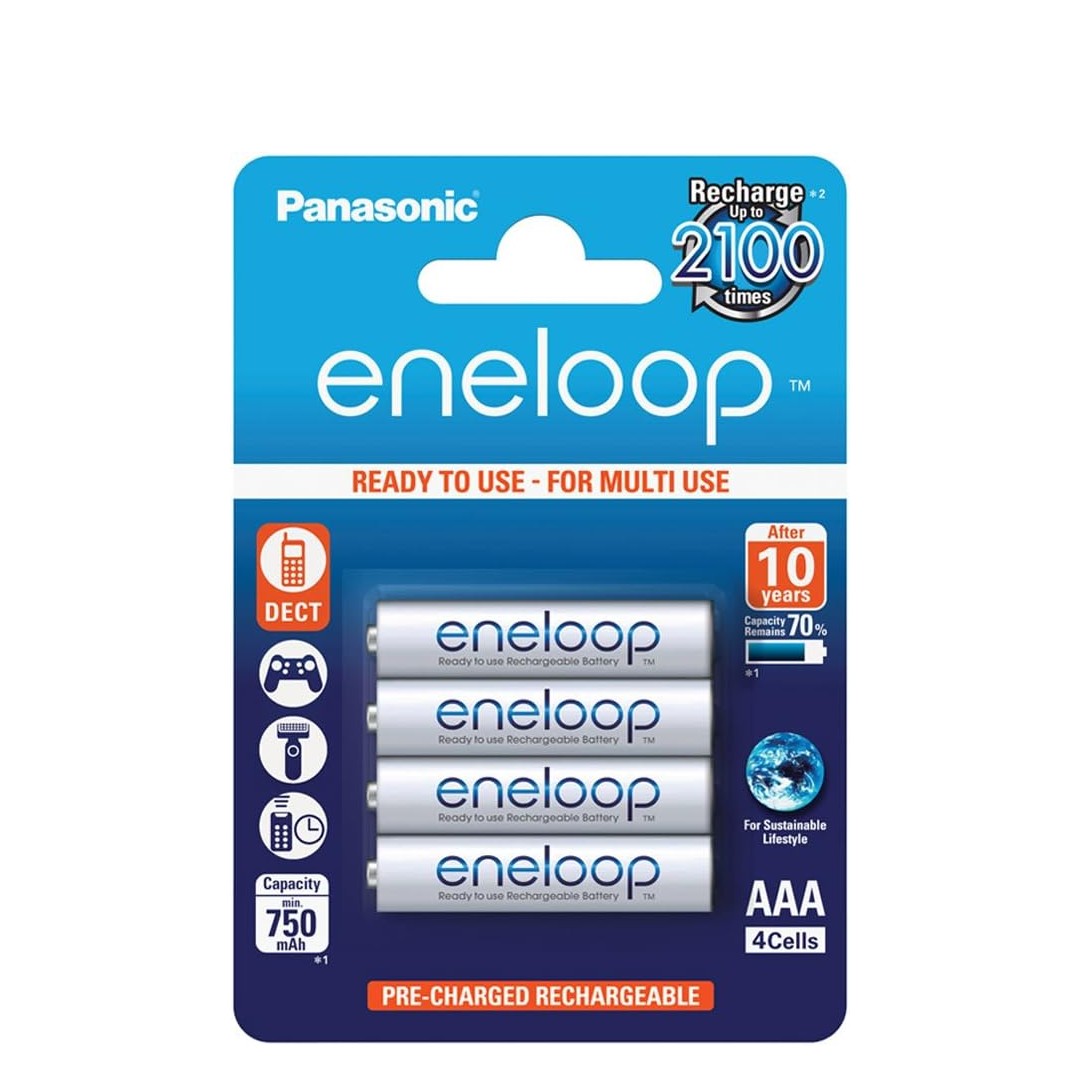
Best value
Eneloop batteries are designed and manufactured in Japan, and were among the first NiMH cells to hit the market that can hold their charge really well over a long time. The latest generation retain 70 per cent of a full charge even after 10 years.
Read more below
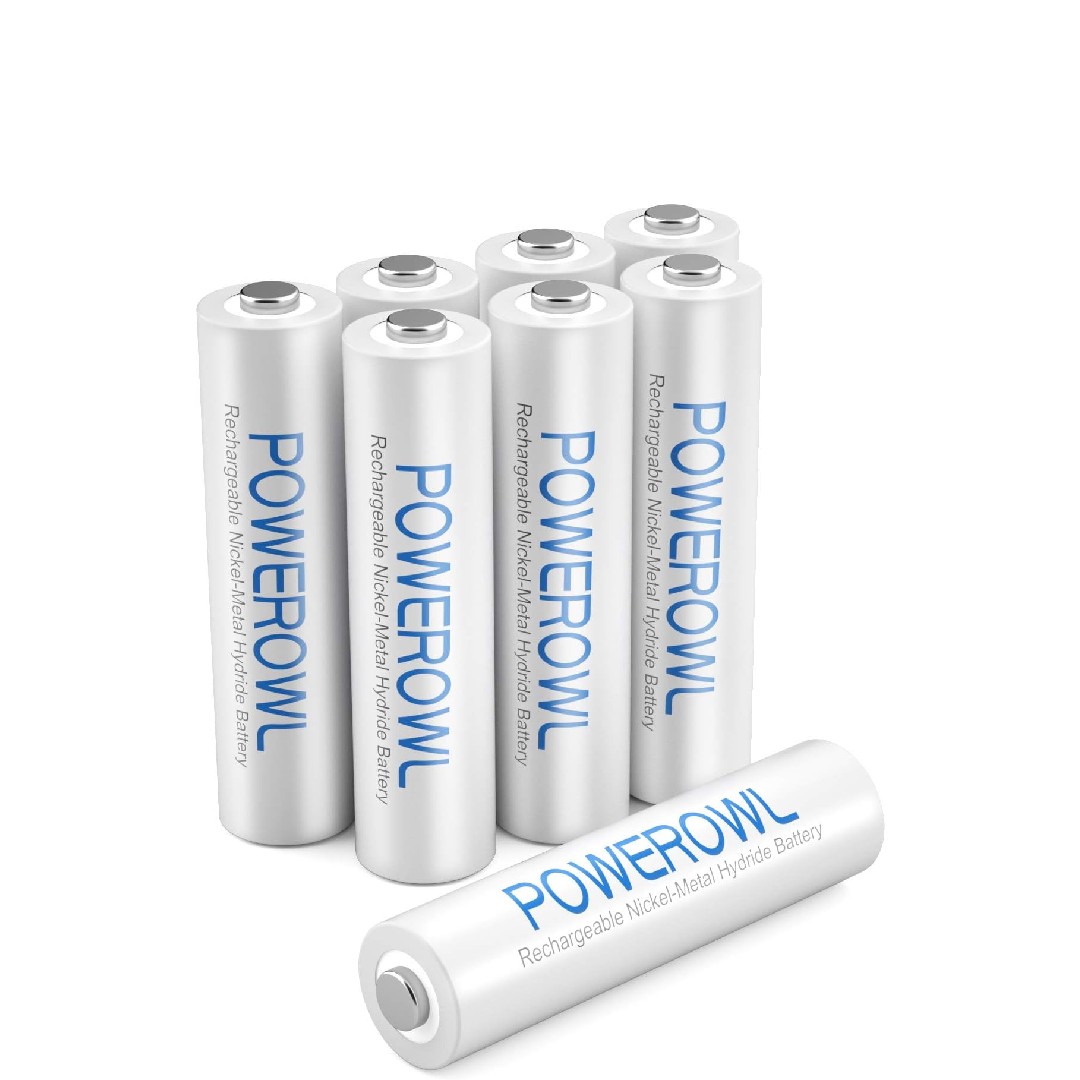
Best budget
The POWEROWL has a particularly high capacity for AAA batteries of 1000mAh, coupled with a generous overall lifetime of up to 1200 recharging cycles. That should keep you going for many years and they’re pre-charged using wind-power.
Read more below
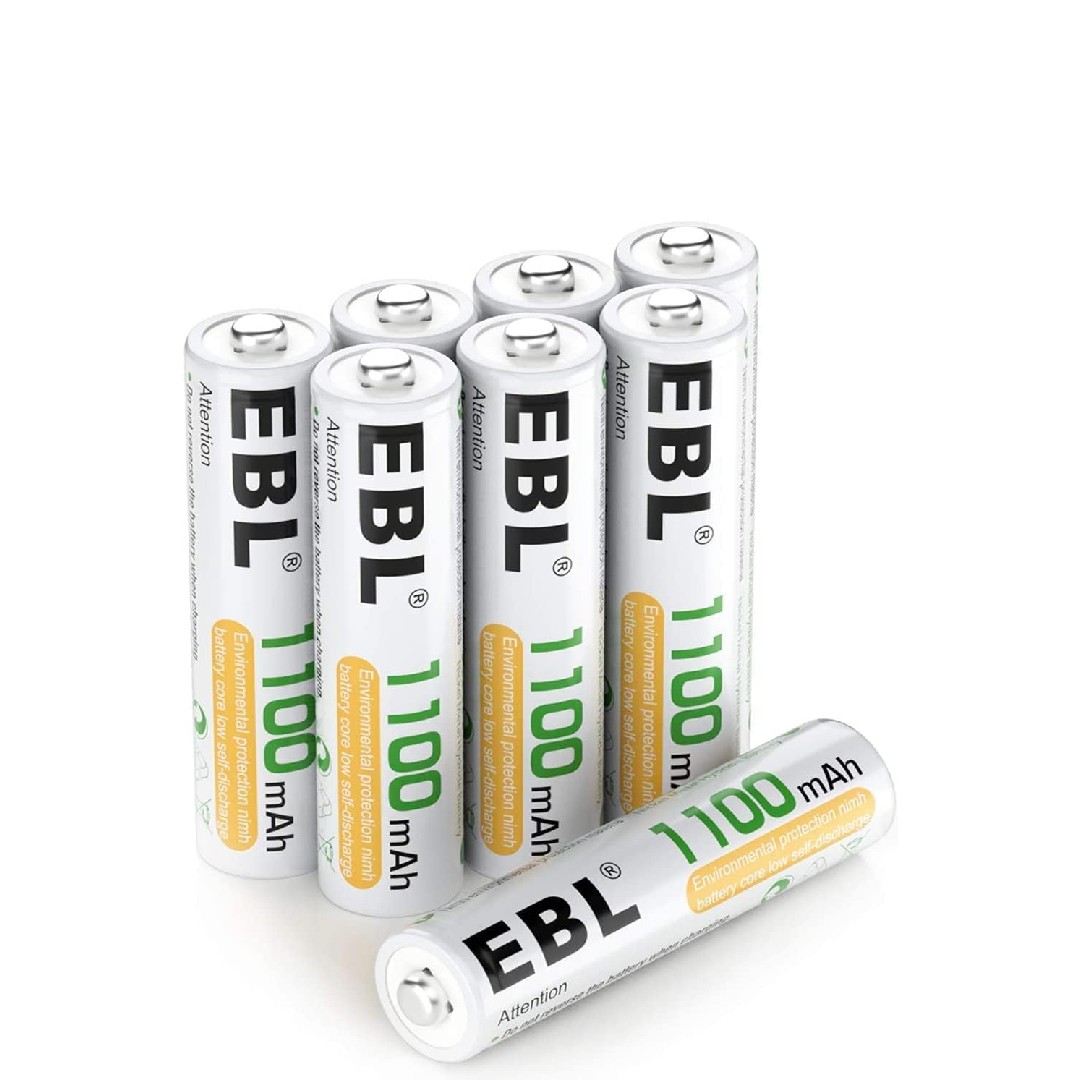
High-capacity value
The latest edition of its NiMH AAA cell has an unusually high capacity of 1100mAh, for such a physically small battery. Its endurance is impressive not only for use in devices with a high current drain, but also in weathering the elements.
Read more below
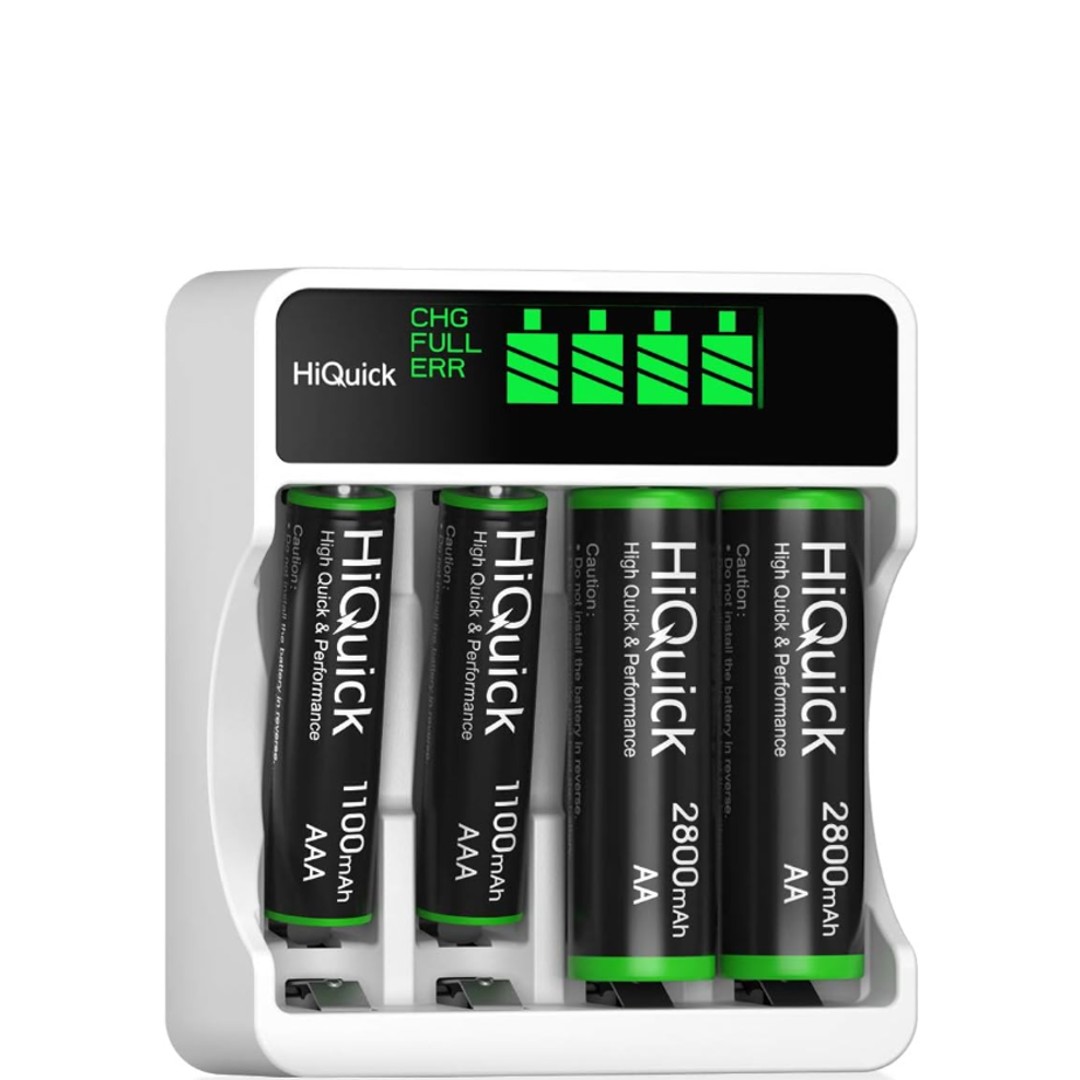
All-rounders
We tested these batteries in a variety of high-drain devices including flashlights and camera flashguns. We really liked their impressive staying power and complete reliability. Plus they stay charged for long periods when they're not in use.
Read more below
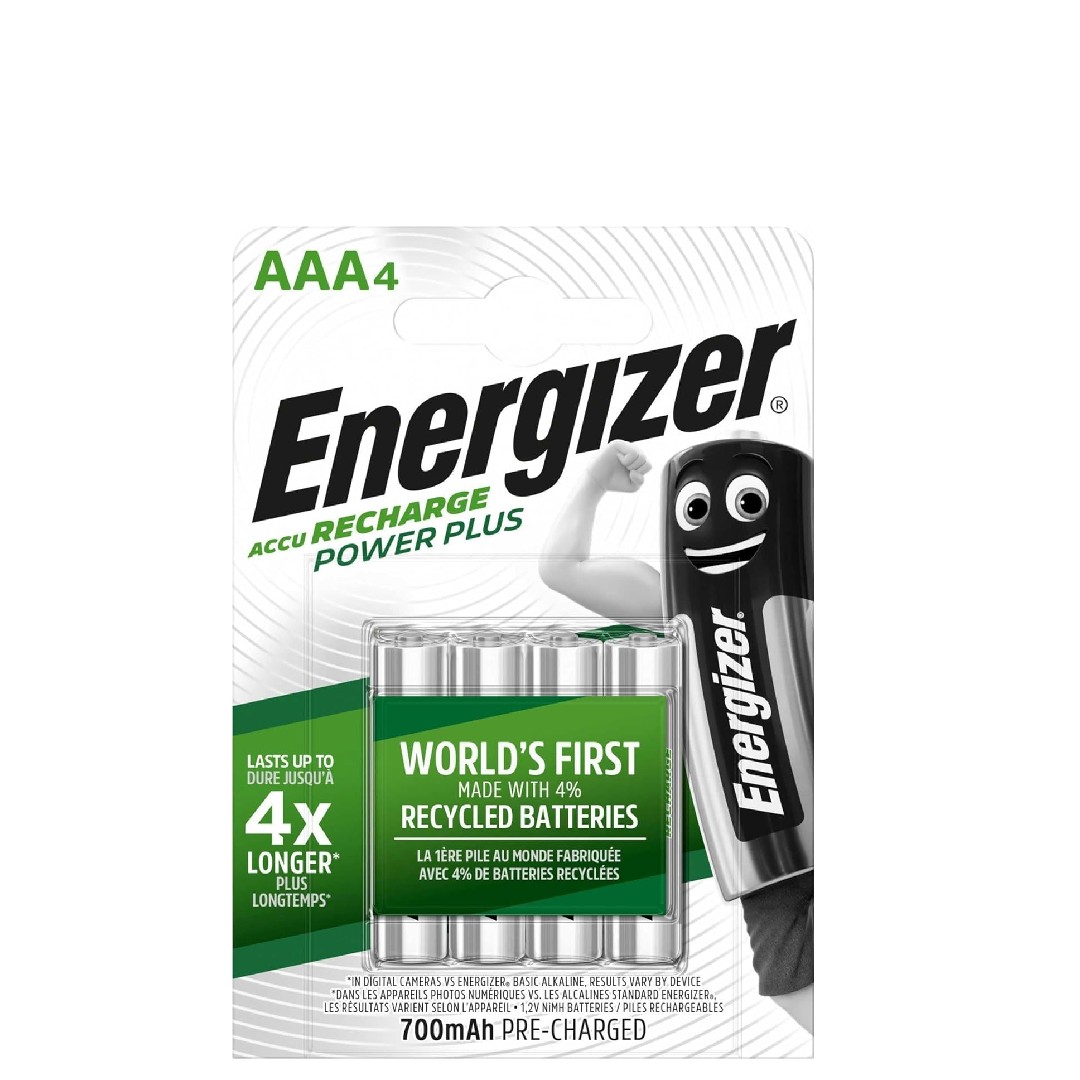
Best eco-friendly
This option has particularly good eco credentials, being the first rechargeable battery to be made with 15% recycled materials, including 4% recycled batteries. It’s sold in 100% recyclable packaging, and has a long life with up to 1000 recharge cycles.
Read more below
Best rechargeable AAA batteries
Why you can trust Digital Camera World
Best AAA rechargeable batteries overall
Specifications
Reasons to buy
Reasons to avoid
For both indoor and outdoor pursuits, we often need to trust out kit in critical situations, so reliability is a key factor. At Digital Camera World, we’ve been using Eneloop Pro batteries for years and have enjoyed absolute reliability, all of the time, even in the harshest conditions. These batteries are rated to work in temperatures from -20 to +50 degrees Celsius, so you can pretty much use them anywhere, anytime.
They come pre-charged with solar power, and are ready to use, straight out of the box. In fairness, that’s no less than we’d expect nowadays. Compared with regular Eneloop AAA batteries, they have a higher capacity of 930mAh compared with 800mAh, outstripping alkaline batteries and many rechargeable competitors. They’re ideally suited to devices with a hefty current draw. It’s not all good news though, as the maximum number of times you can recharge the Pro batteries over their lifetime is rated at 500, compared with 2100 times for regular Eneloop batteries.
Test results: 70 mins in high-intensity flashlight
See our full Panasonic Eneloop Pro review
Best AAA rechargeable batteries for value
Specifications
Reasons to buy
Reasons to avoid
Eneloop batteries are designed and manufactured in Japan, and were among the first NiMH cells to hit the market that can hold their charge really well over a long period of time. The latest generation shifts things up a gear, retaining 70 per cent of a full charge even after 10 years. That’s quite some shelf life! The 800mAh capacity doesn’t compare too favorably with some of the more high-capacity AAA batteries on the market now but they still last much longer than alkaline batteries before needing to be recharged.
For longevity, a big bonus is that you can recharge these Eneloop batteries an incredible 2100 times, so the overall lifetime far exceeds that of many competitors. As with the pricier and higher-capacity Eneloop PRO batteries, they come pre-charged using solar power and are rated to work in a -20 to +50 degrees Celsius temperature range.
Test results: 85 mins in high-intensity flashlight
See our full Panasonic Eneloop Pro review
Best budget AAA rechargeable batteries
Specifications
Reasons to buy
Reasons to avoid
You often have to choose between high capacity and recharge cycle longevity when picking rechargeable batteries. Not so with here. The POWEROWL has a particularly high capacity for AAA batteries of 1000mAh, coupled with a generous overall lifetime of up to 1200 recharging cycles. That should keep you going for years and, to extend the eco credentials, they’re pre-charged using wind power.
Typical of the latest rechargeable batteries, they hold their charge very well, rated at retaining 60 per cent of a full charge after two years. They keep on working down to just below freezing temperatures. The batteries are widely available around the world and, in some regions, a ‘PRO Goldtop’ version is available with new conduction technology. Both editions are standout value at the price.
Test results: 80 mins in high-intensity flashlight
See our full Powerowl Pro Goldtop battery review
Best high-capacity value
Specifications
Reasons to buy
Reasons to avoid
A famous name in the circles of power, EBL has been manufacturing rechargeable batteries and battery chargers for 25 years and counting. The latest edition of its NiMH AAA cell has an unusually high capacity of 1100mAh, for such a physically small battery. Endurance is impressive not only for use in devices with a high current drain, but also in weathering the elements, with a working temperature range of -20 degrees to +60 degrees Celsius, or -4 to 140 degrees Fahrenheit.
The rugged build is based on a steel shell and advertised as completely leak-proof. The batteries also feature over-charge, over-discharge, over-voltage and short-circuit protection. Commonly sold in packs of eight, they’re very good value at the price and come complete with a storage case. One downside, however, is that they’re only 20% charged before shipping, so require charging up before being used. The total number of times they can recharged is rated at 1200, which exceeds that of some directly competing batteries.
Test results: 85 mins in high-intensity flashlight
See our full EBL rechargeable battery review
Great all-rounders
Specifications
Reasons to buy
Reasons to avoid
We love a bit of variety. HiQuick sells these 1100mAh AAA batteries in several different combinations, mixing and matching with 2800mAh AA rechargeable NiMH batteries and different chargers, with or without a USB charging, and in different sizes for charging anything from two to twelve batteries at once.
We tested them in a variety of high-drain devices including flashlights and camera flashguns. We really liked their impressive staying power and complete reliability. As with various competitors, they stay charged for long periods when not in use, which is a must for us. All in all, they’re a top power-up and great value at a very competitive selling price.
Test results: 85 mins in high-intensity flashlight
Read more: HiQuick AAA Rechargeable 1100mAh review
Best AAA rechargeable batteries for eco-friendliness
Specifications
Reasons to buy
Reasons to avoid
This big-brand battery comes from a long-established manufacturer. It has particularly good eco credentials, being the first rechargeable battery to be made with 15% recycled materials, including 4% recycled batteries. It’s sold in 100% recyclable packaging too, and should have a long life with up to 1000 recharge cycles.
The battery is rated at keeping its charge for a year, although the 700mAh capacity isn’t particularly impressive. Energizer says that using the battery at extreme temperatures can significantly impact the battery cycle life, but it’s rated at 0 degrees to +50 degrees Celsius while in use, and -20 degrees to +30 degrees Celsius for storage. Unless you really need a higher-capacity battery for power-hungry high devices, it’s a pretty good value option at the price.
Test results: 55mins in high-intensity flashlight
Read more: Energizer Recharge Power Plus AAA review
Best for super-fast charging
Specifications
Reasons to buy
Reasons to avoid
These Itson batteries come from the same parent company as makes our favorite Panasonic eneloop rechargeable – so we were not surprised that these ones performed really well in our tests. Unfortunately, you don't seem to be able to buy them in North America at the moment, though.
One thing that did impress us was that these cells worked well with super-fast chargers. With some rival, the batteries get stupidly hot when you try to ramp up the recharging time - but not so with the Itson ItsRecharge Pro - that stayed impressively cool un the strain.
Test results: 85 mins in high-intensity flashlight
Read more: Itson ItsRecharge Pro AAA review
Trusted brand
Specifications
Reasons to buy
Reasons to avoid
Duracell needs no introduction to battery buyers, being one of the most famous manufacturers in the world. The Duracell Rechargeable AAA has an impressive capacity of 900mAh, almost matching the Panasonic ENELOOP PRO and easing ahead of the standard ENELOOP AAA.
Duracell states that the battery can be recharged up to 400 times in its lifetime, and that’s backed up by a guarantee that lasts for up to 5 years or 10 years in different world regions. And naturally, being a Duracell battery, it comes complete with that iconic copper top. Value for money is a moveable feast. It’s pretty good in Europe, but a relatively expensive option in the USA.
Test results: 62 mins in high-intensity flashlight
Read more: Duracell Rechargeable AAA review
FAQs
Why do rechargeable batteries seem to suddenly run out of power?
Disposable alkaline batteries have a fairly constant discharge rate while in use. Rechargeable NiMH batteries give a much more constant voltage throughout their discharge cycle, but it drops off rapidly at the end, when they run out of power.
Why does the charge indicator in devices not show full when I insert fresh rechargeable batteries?
When new, alkaline batteries have a potential difference across their electrodes of 1.5V (volts). NiMH batteries deliver a lower 1.2V even when fully charged, so devices that have a built-in volt meter may display a lower reading.
Do I need to fully discharge NiMH batteries before recharging them?
Unlike older NiCad (Nickel Cadmium) rechargeable batteries, NiMH batteries don’t suffer from a ‘memory effect’, so there’s no need to fully discharge them before recharging.
Can I use any charging device for my rechargeable batteries?
Most battery manufacturers only recommend using own-brand rechargers – and you can usually buy the charger and your AAA cells in a kit. AA battery chargers will also work for AAA batteries – as they are the same length between contacts. Independently manufactured rechargers should be ok but it’s best to avoid very ‘fast chargers’, as these can shorten the lifespan of the battery and can cause problems from the batteries overheating and even leaking. Overcharging can damage or destroy a battery.
How to choose the best rechargeable battery
Choosing the right AAA rechargeable battery depends on your device's needs and your usage habits. Focus on milliamp-hours (mAh): the higher the mAh, the longer the battery lasts on a charge. Low-drain devices like remote controls can function well with 400-800mAh batteries, while high-drain devices like cameras might need 1100mAh or more. As for longevity, look for NiMH batteries with at least 1000 recharge cycles and low self-discharge rates to hold a charge for months.
How we test rechargeable batteries
Our testing of rechargeable batteries involves comprehensive evaluations to ensure performance, longevity and safety. We use cycle testing to determine their ability to withstand repeated charging and discharging. Additionally, we use charge retention tests to gauge how well the batteries hold power over time. Most importantly, we assess each battery's performance in cameras and other devices under real-world conditions.
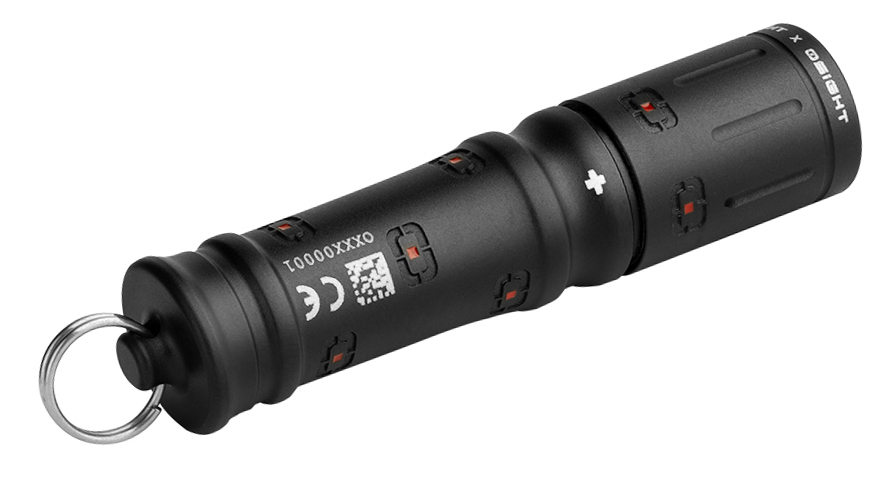
To test the capacity of AAA cells with use a high-power Olight i3E EOS – mins flashlight that gives a powerful 90 Lumens of light, with a reach of 44m, or 144 feet. We measure how long the flashlight keeps going on a set of each AAA rechargeables we test.
Also see our guide to the best AA rechargeable batteries
The best camera deals, reviews, product advice, and unmissable photography news, direct to your inbox!
Matthew Richards is a photographer and journalist who has spent years using and reviewing all manner of photo gear. He is Digital Camera World's principal lens reviewer – and has tested more primes and zooms than most people have had hot dinners!
His expertise with equipment doesn’t end there, though. He is also an encyclopedia when it comes to all manner of cameras, camera holsters and bags, flashguns, tripods and heads, printers, papers and inks, and just about anything imaging-related.
In an earlier life he was a broadcast engineer at the BBC, as well as a former editor of PC Guide.
